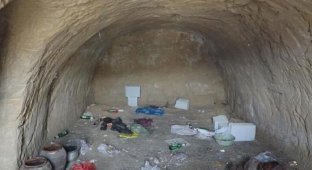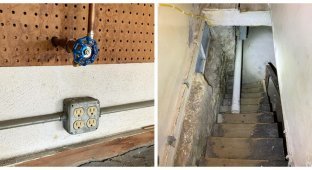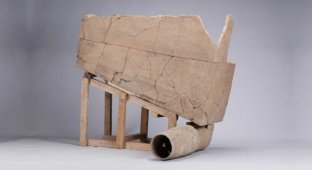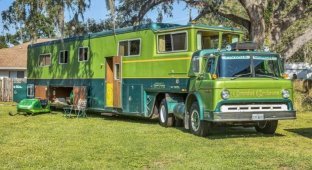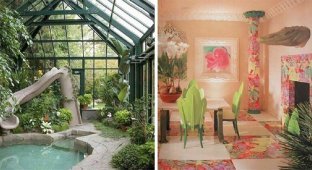Fortified houses that could withstand a cannon shot and a months-long siege (9 photos)
My home is my castle. Everyone knows this simple phrase. AND, of course, no one takes it seriously, everyone understands that the fortress is it's just a collective image of all that warm and light that represents our home. 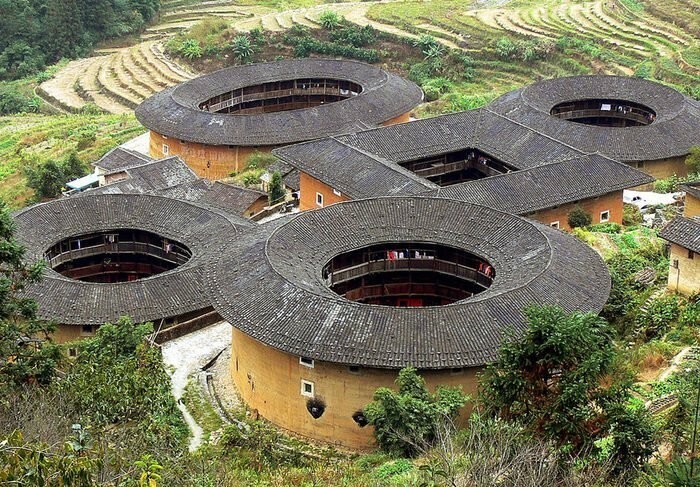
However, this only applies to you and me. In China fortified houses are not uncommon. These fortresses are called Tulou, and They are located in the provinces of Fujian and Guangdong.
In the Disney movie "Mulan" we just could see one of them. 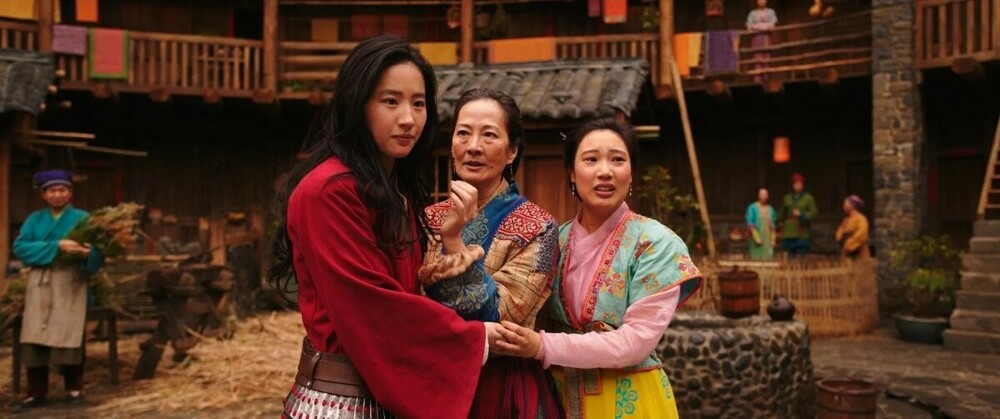
However, to say "house" or "fortress" in Tulou is still impossible, because these are entire residential complexes that were built next to each other friend to protect the Hakka people from other peoples then living on territory of modern China. Still, even now in China lives already 56 nationalities that used to be constantly at war with each other for territory, influence and resources.
So the Hakka people, who fled to the south of the country, were forced to defend against the locals already living there. Therefore, for defense they built Tulou, which to some extent were impregnable for relatively poorly armed Hakka enemies. 
Moreover, these were not just some fortified houses, but real fortresses built according to the mind. And here everything is interesting.
Firstly, the construction process itself was interesting. fundamental structures: the thickness of the walls of each Tulou could reach as much as two or three meters, which made the penetration into the building practically impossible - there was only one entrance to Tulou, but it was also very good defended himself. Moreover, these houses, like the Great Wall of China, were built about the same technology. Inside the walls you can find both stone and like bricks, and bamboo, tightly pressed with clay. It is not surprising that the Tulou survived, surviving both direct cannon shots and earthquake and centuries of exploitation. 
They also withstood fires, because the Hakkas divided Tulou into sections, each of which was fenced off with a fireproof partition. These sections were our "entrances", the entire territory of which was occupied by one family.
However, it is not easy to talk about families in Tulou. Usually, all the inhabitants of Tulou had one surname and in one way or another were connected with each other another by blood ties. Sometimes the inhabitants of one such building were 600-800 people at the same time, which makes them both a city and family, and neighbors. 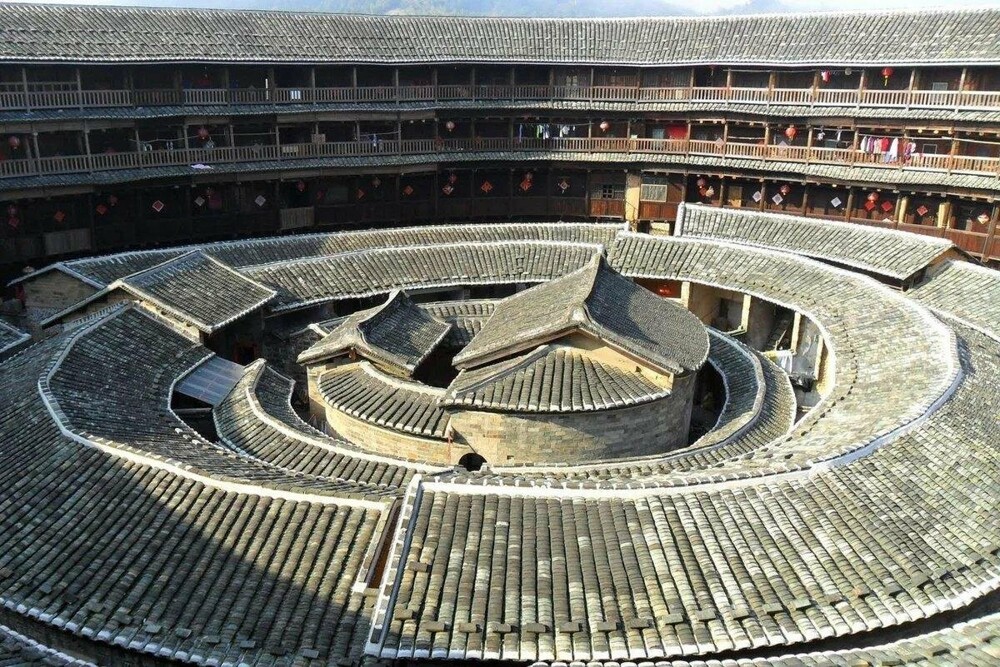
In the center of Tulou, as a rule, a well was dug, from where the inhabitants "fortresses" took water. And it was an incredibly smart move: in the event of a siege the building became virtually autonomous, because if there is water and access to her, this is already a huge advantage for the defenders.
There were cases when Tulou withstood the defense for several months: the inhabitants had water and food, chickens laid eggs, stocks there was also plenty of hay and rice. But the hitters weren't so good prepared, so it was not possible to starve out Tulou. 
From the inside of Tulou, the inhabitants made original floors-tiers, which were occupied by different families. On the first floor there was a well and outbuildings where domestic animals lived, there was also altar. The second floor, as a rule, was warehouses for food and resources, of which the Hakka always had a lot. Here were some common recreation rooms. And already on the third (sometimes fourth) floor were living quarters. 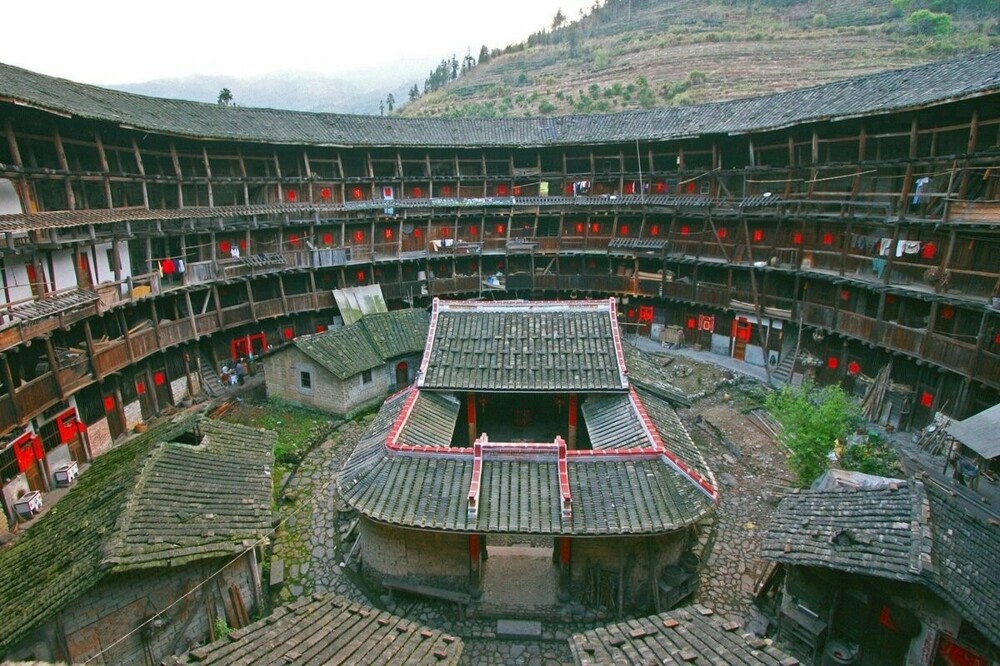
At the same time, life in Tulou was not easy. Lack of space and dense housing has a very strong impact on the quality of life. The space inside Tulou was cramped and very dark: there was no security.
However, the Hakka did not suffer much from this: they had there is simply no time to do it. They had many concerns of their own: it was necessary it was necessary to make sure that Tulou with his huge number of people worked, as a single mechanism, so each resident of this building had their own duties: someone was engaged in defense, someone watched the children, and someone took care of the animals and obtained the necessary communities for living resources. 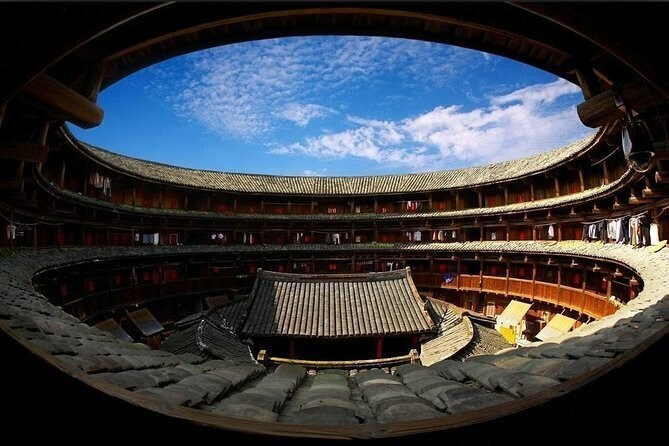
In modern China, tulou still exist. Moreover, they are inhabited. But we won’t be able to get into many of them - now This is a private area closed to the public. Some Tulou became heritage of UNESCO, and some - a popular tourist attraction. Here their inhabitants managed to monetize the houses of their ancestors.
There are organized excursions and small historical scenes and tea parties, on the territory of Tulou there are souvenir shops and cafes - in general, everyone is spinning as best they can. And I don’t see anything wrong with that - to touch such unique buildings are very interesting. 
So there are still houses-fortresses, where fits a whole city with a full infrastructure and self-sufficiency. Of course, now the need for the defensive function of Tulou has disappeared, but the mentality of the Chinese does not allow them to leave the land of their ancestors. They honor their traditions, honor the people who lived in these houses earlier, and therefore stay here. After all, as the inhabitants say, they leave here, in the place of these majestic structures, another plant will be built immediately or shopping mall.














